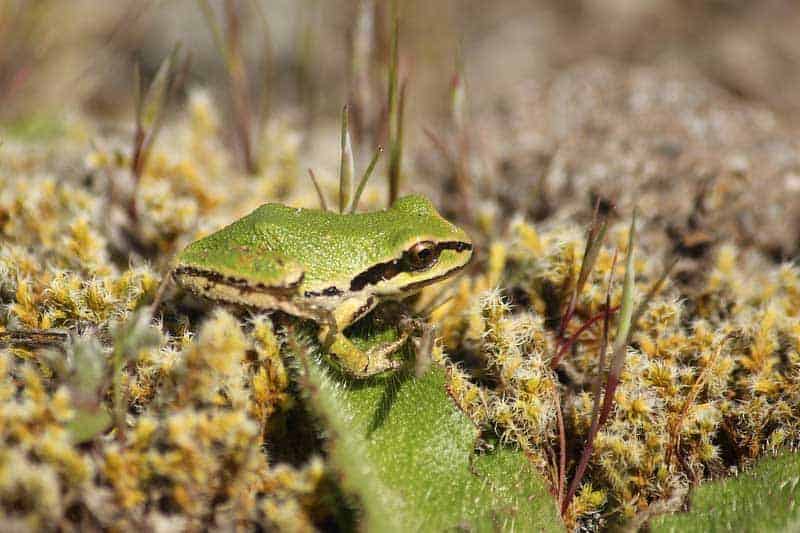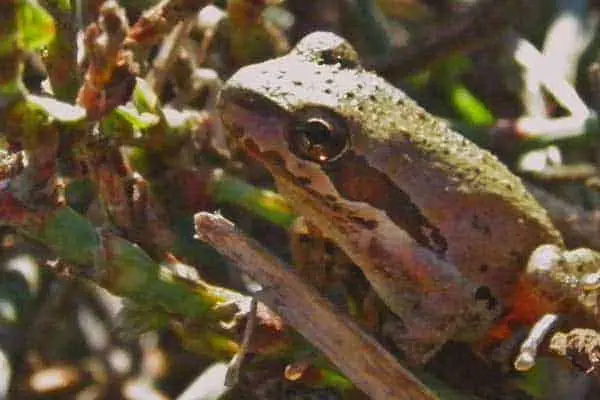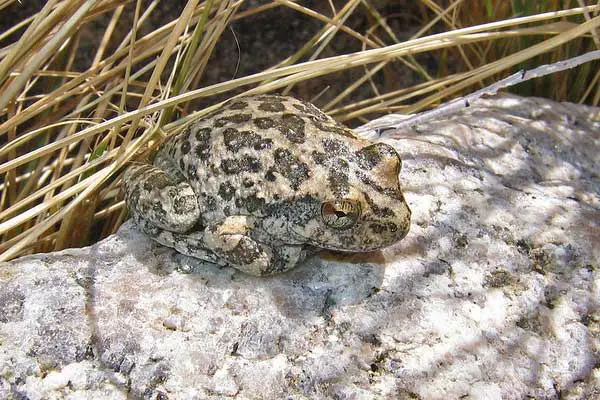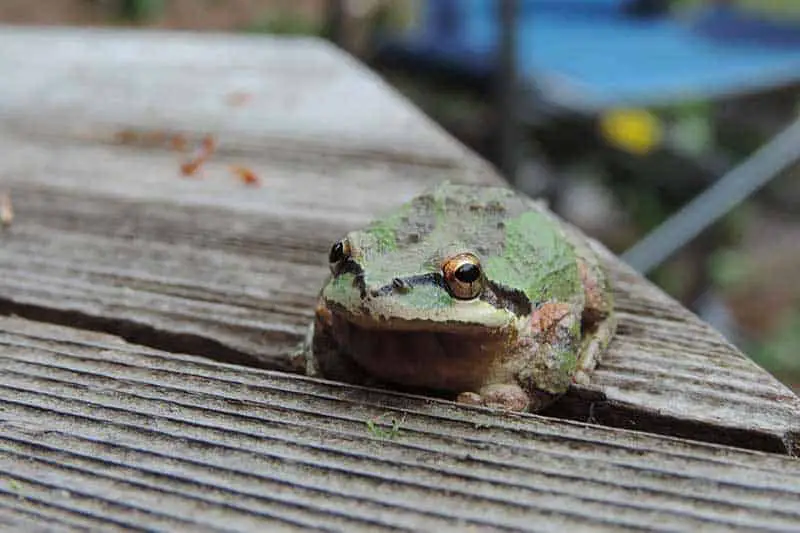Are there tree frogs in California? There are currently four species of tree frogs in the state. However, before we explore the different types of tree frogs in California, it’s important to understand exactly what a tree frog is.
What is a tree frog?
By definition, tree frogs are frog species that spend the majority of their lifespan in an arboreal state. In other words, tree frogs primarily live in trees or other high-growing vegetation.
In most cases, tree frogs typically only descend to the ground for the purpose of mating or spawning. When this happens, some species build their foam nests on leaves and other ground vegetation. Once they reach adulthood, tree frogs rarely leave their arboreal habitat.
Population decline
Worldwide, accumulated evidence from the past decade has indicated that amphibian populations are declining at an alarming rate. Unfortunately, population declines in the western part of the United States are particularly severe. There are reports that certain species of frogs have been declining in California since the 1970s.
Amphibian populations may very well be declining, even in protected habits. The causes of declining amphibian populations are disease, chemical contaminants, global climate change, alteration and fragmentation, over-exploitation, and habitat destruction.
In short, amphibians aren’t evolving quickly enough to keep up with the changes they are being forced to endure. This includes California tree frogs.
Tree Frogs in California
From what we can ascertain, there are just 4 species of tree frogs in California. The Northern Pacific tree frog, the Baja California tree frog, the California tree frog, and the Sierran tree frog.
1. Northern Pacific tree frog

Scientific name: Pseudacris regilla
The Northern Pacific tree frog measures between 0.75 and 2.0 inches in size from snout to vent (1.9-5.1 cm).
These tree frogs have a large head and eyes, limited toe webbing, small round pads on the tips of the toes, and a slim waist. Their skin is moist and smooth and their legs are slender and long.
In many cases, you will notice a Y-shaped marking between their eyes, and they have a wide dark stripe that runs through the middle of each one of their eyes. This stripe extends from their nostrils down to their shoulders. In males, the throat is wrinkled and dark in color.
Northern Pacific tree frogs are nocturnal during dry periods, but become active during both day and night when the climate is more humid. In areas that have temperature extremes of cold or hot, these frogs sometimes hibernate in moist shelters that include debris piles, dense vegetation, mammal burrows, crevices, and even buildings occupied by humans.
Range
The range for Northern Pacific tree frogs is unclear because a 2006 study by Recuero sampled a small number of frogs. The only specific region for these frogs in California is the northwestern coast in Del Norte and Humboldt counties.
2. Baja California tree frog

Scientific name: Pseudacris hypochondriaca
The Baja California tree frog was described in 2006 as a new species. From snout to vent, these tree frogs measure between 0.75 and 2.0 inches long (1.9-5.1 cm).
Baja California tree frogs are small and have a large head, slim waist, and large eyes. They have limited webbing between their toes, and the toe tips have round pads. Frequently, you will notice a Y-shaped marking between their eyes.
Most notably, Baja California tree frogs have a wide dark stripe that runs through the middle of each eye and extends from their nostrils down to their shoulders.
These tree frogs have a dorsal body coloring that is variable and includes tan, green, gray, brown, cream, and reddish colors. They can change color quickly from dark to light, but the dark eye stripe doesn’t change.
These frogs are mostly nocturnal during dry periods. Otherwise, they are active during both the day and night.
Range
Baja California tree frogs are found throughout southern California, but the range of the species is unclear. These tree frogs have been spotted south of Bakersfield and Santa Barbara County, excluding the majority of the area’s southeast deserts.
These tree frogs also extend farther east into the southern regions of Nevada, and they are present on the islands of Santa Rosa, Santa Cruz, and Santa Catalina.
Populations of Baja California tree frogs have also been introduced at plant nurseries in Phoenix, Arizona, and in cattle ponds located in the Virgin Mountains. Baja California tree frogs also can be found in Soda Springs and California City, but experts believe these were introduced and are not indigenous to the areas.
3. California tree frog

Scientific name: Pseudacris cadaverina
A larger species of tree frog, the California tree frog measures between 1.25 and 2.25 inches long from vent to snout (3.2-5.7 cm).
These tree frogs have the distinction of having rougher skin than some of the other common tree frogs. Their skin is cryptically colored and can be brown or gray with dark blotches. They change color to match their habitat.
On the underside, California tree frogs are whiteish in color, and their groin, lower abdomen, and rear legs are yellow.
California tree frogs have expanded pads and webbing on the toes.
Range
California tree frogs are found throughout the coastal ranges of Southern California from the southern part of San Luis Obispo County across and across the Transverse Ranges, and further east into Joshua Tree National Park. You can also find California tree frogs in the Peninsular Ranges and the desert slopes. Their range extends as far as northern Baja California, Mexico.
These tree frogs are found around rocky washes that have permanent quiet pools, as well as around canyon streams. You can also find these frogs in palm oases, desert streams, coastal streams, and in the mountain pine belt.
4. Sierran tree frog

Scientific name: Pseudacris sierra
The Sierran tree frog, sometimes called the Sierran chorus frog, is between 0.75 and 2.0 inches long from vent to snout (1.9-5.1 cm).
Like some of the other California tree frogs on this list, Sierran tree frogs have large heads and eyes, round pads on the tips of the toes, limited toe webbing, and a slim waist.
These frogs have a wide stripe that is dark which runs through the middle of each eye and extends down from its nostrils to its shoulders. Sierran tree frogs can change colors from dark to light and from brown to green (or vice versa) in response to conditions in the environment. However, the dark eye strip doesn’t change.
Sierran tree frogs are active during daytime and nighttime but are mostly nocturnal when the climate is dry.
Range
Sierran tree frogs are from Santa Barbara County and further north to Humboldt County. Their range extends north of Bakersfield and into the states of Oregon, Nevada, Idaho, and further north into Montana and British Columbia.
A now-defunct U.S.G.S. account noted that Sierran tree frogs occur up the northern coast of California into the southwestern area of Oregon.
Advocates for this frog are concerned because some of the frogs made their way to Florida in shipments from a Santa Rosa, California horticultural business.
FAQ About Tree Frogs in California
Below are some frequently asked questions about tree frogs in California.
Are California tree frogs poisonous?
California tree frogs do not have poison glands, so they pose no risk of harm to humans.
What do California tree frogs eat?
These tree frogs eat a wide variety of centipedes, spiders, insects, and other invertebrates. Tadpoles feed on plant material and organic detritus.
How long do California tree frogs live?
If a California tree frog manages to reach adulthood, it will live about two years in the wild.



